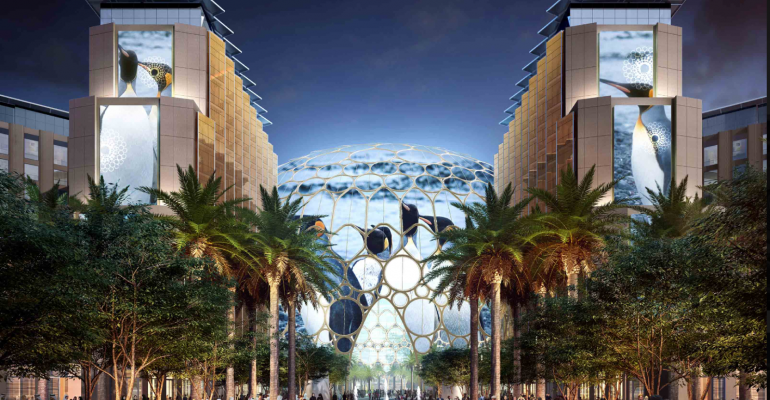Part 2: Dubai Offers the Biggest and Best for Incentives
Part 3: Where Robots Ride Camels: Dubai Offers Visitors the Best in Old and New
Dubai, part of the United Arab Emirates, will host the World’s Fair in 2020 in a purpose-built, 4.38-square-kilometer campus that will include more than 20 performance spaces and the Dubai Exhibition Centre North—which, when combined with the South campus, will be one of the largest convention centers in the world.
Although the main purpose of the site is to welcome, entertain, and educate more than 25 million visitors during the fair that runs for six months starting in October 2020, the legacy site is designed purely with meeting planners in mind. Some of the on-site apartments built to hold workers and a few of the 30,000 fair volunteers will be converted to hotels, and venues such as the 15,000-capacity Jubilee Stage and 10,000-capacity Al Wasl Plaza will be available for events. So far, 192 countries have confirmed pavilions at the site, and some of them will remain after the fair to add an international flavor. The Sustainability Pavilion, designed with moving solar panels that follow the sun and are powerful enough to charge 900,000 cell phones a year, will also remain and be converted into a children’s science center with event space for rent.
Dubai is also upgrading its transportation facilities before Expo 2020. A new Route 2020 metro line will bring up to 44,000 visitors an hour in and out of the Expo site station, and Dubai is improving and expanding its airports to accommodate more travelers, faster. The main airport, Dubai International (DXB), has award-winning Wi-Fi and all its gates are designed to handle the wide-bodied jets that make up the Emirates Airlines fleet, so arriving flyers rarely have to sit on the tarmac waiting for a gate. Regular visitors of any nationality can register for the automated Smart Gates to skip immigration-kiosk queues. According to Lorne Riley, director of corporate communications for Dubai Airports, Al Maktoum International Airport, the city’s second airport, is being redesigned and expanded with the goal of becoming the biggest and most efficient airport in the world. For instance, each piece of luggage will be RFID-tagged to trace on its journey from aircraft to pick-up, and the transition will be coordinated to minimize passenger wait times.





